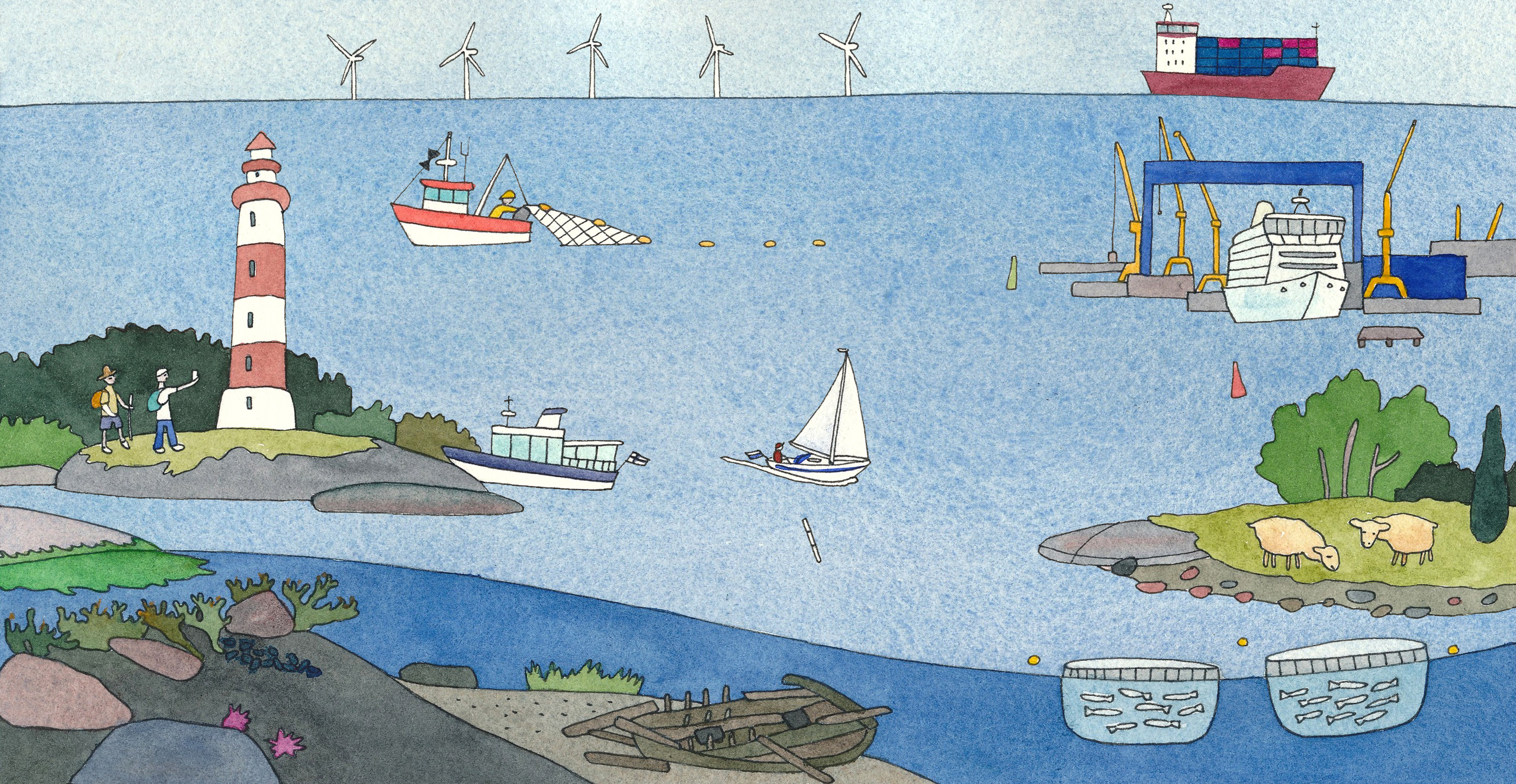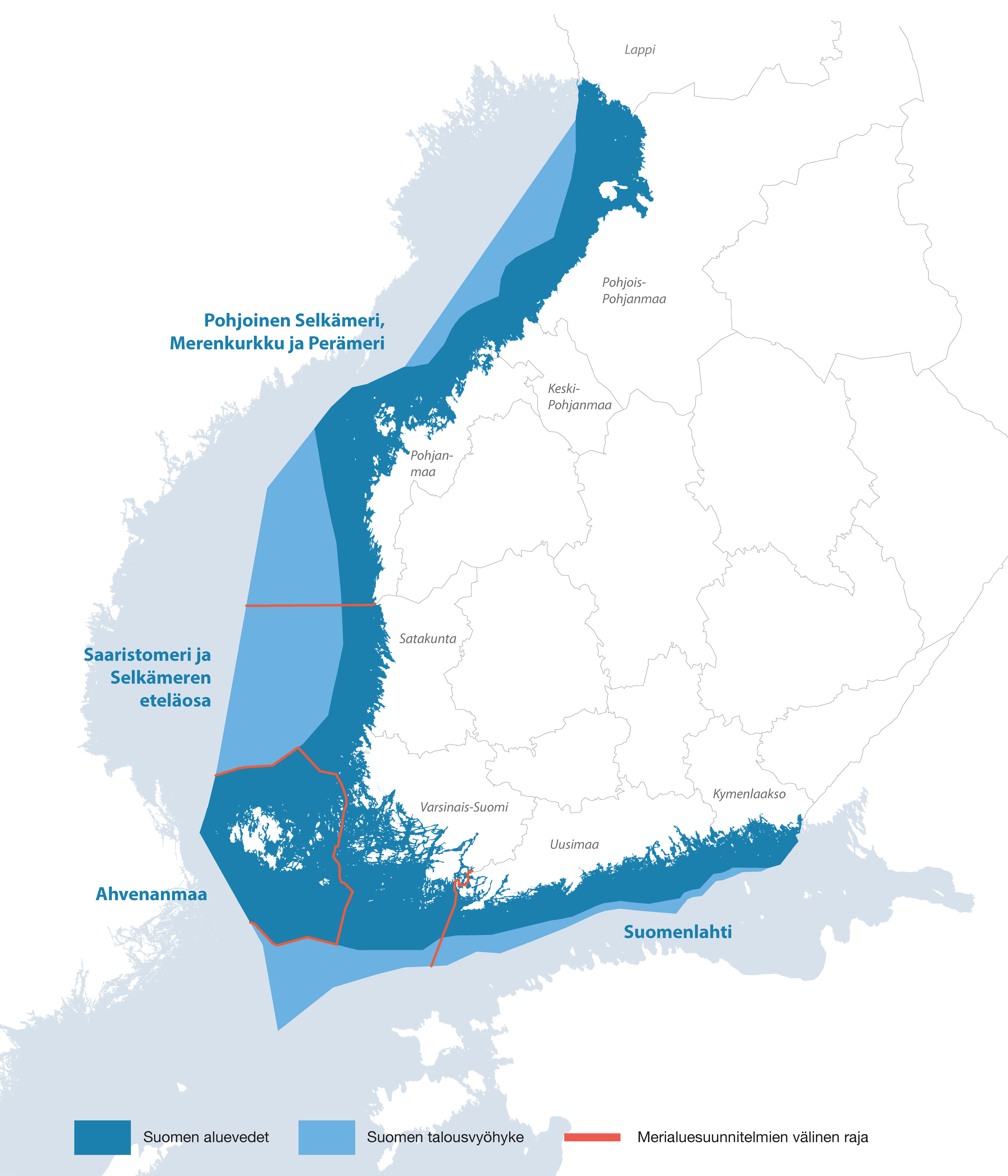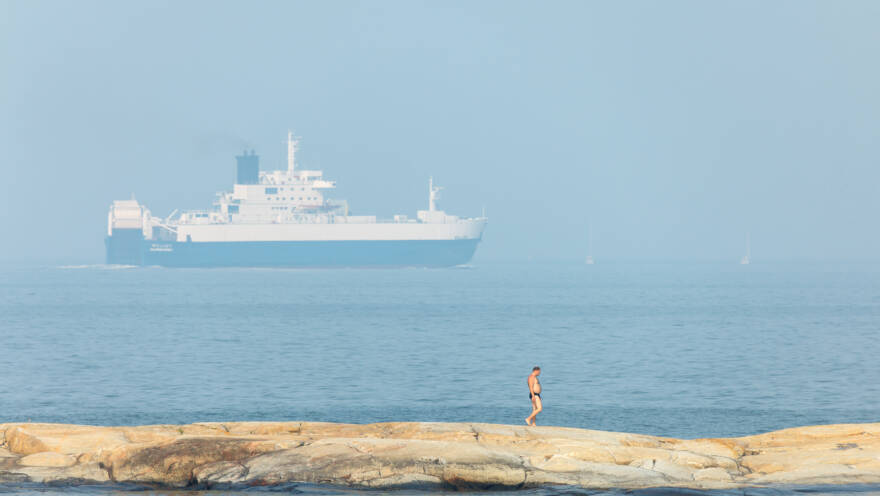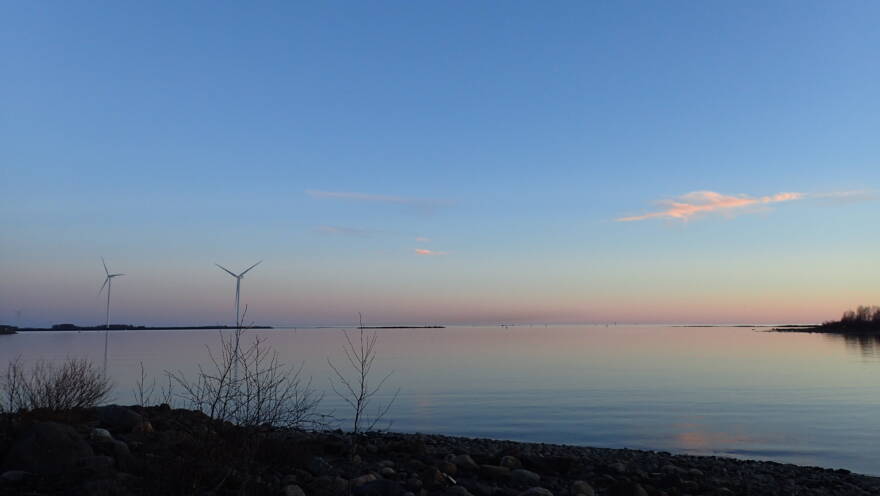
Maritime spatial planning promotes sustainable development and growth
The sea and marine regions are used in many ways. The role of maritime spatial planning is to reconcile the needs of different uses and, in turn, to help ensure that the use of the sea is sustainable.
A maritime spatial plan is a general plan of which area would be well suited to engage in any form of maritime use, such as energy production, maritime transport, fisheries, and tourism or in which areas these activities are already concentrated. The needs of nature conservation and national defence are also considered.
Maritime spatial planning is based on a directive of the European Union, which requires EU member states to draft land use plans for their maritime areas.

Finnish sea areas are divided into 3 +1 planning areas
In order to draw up maritime spatial plans, Finland’s territorial waters and its economic zone are divided into three planning areas: The Gulf of Finland; The Archipelago Sea and Southern Bothnian Sea; The Northern Bothnian Sea, the Quark, and the Bay of Bothnia. The Åland Islands will also compile a maritime spatial plan for its region.
The final plans cover the entire Finnish sea area and together they form the Finnish maritime spatial plan.
Explore the ready-made maritime spatial plans: Maritime spatial plan for Finland 2030(siirryt toiseen palveluun)

Two objectives: blue growth and a good marine environmental status
Maritime spatial planning has two objectives: blue growth and good status of the marine environment.
-
 Go to service
Go to serviceMaritime spatial planning (siirryt toiseen palveluun)
Here, blue growth refers to marine-based industries, such as offshore wind power generation, fish farming, and tourism. Their potential for growth is large, and there is a desire to make better use of these opportunities. This is also a long-term goal of the European Union. Maritime industries also employ many people.
A good environmental status is important for many reasons and this goal is being pursued throughout the European Union. A clean sea is also a productive sea. It enables long-term sustainable growth for marine-based industries.
In maritime spatial planning, 11 different themes are considered
Maritime spatial planning considers the needs of many different forms of maritime use. Important sectors include energy production, maritime transport, fisheries, and aquaculture, as well as tourism, recreation and the environment, and nature.
Attention will also be paid to the needs of national defence, the characteristics of maritime areas, and the interaction between land and sea. Also, other themes, such as cultural heritage, the extraction industry, blue biotechnology, and maritime industry will be addressed in the plan.
Such planning aims to form, together with the stakeholders, a vision of how marine areas will be used in the future. Anyone can participate and influence such plans. By registering with the cooperation network, you can stay up to date with the planning stages!
-
 Find out more
Find out moreMethods of environmental protection
-


